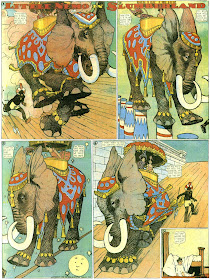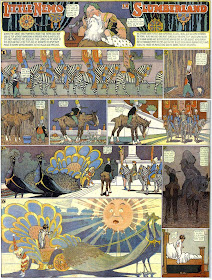Where’s a logophile to go? Someplace unusual…someplace memorable…someplace I can one-up my friends with when they brag about their holiday celebrations.
Well, the choices are the following:
Llanfairpwllgwyngyllgogerychwyrndrobwillllantysiliogogogoch. This Welsh village on the isle of Anglesey is known as having the longest place name in Europe. It means, “St. Mary’s Church in the hollow of the white hazel near the fierce whirlpool and the church of St. Tysilio by the red cave.” Unfortunately it is a contrived name formulated for publicity purposes in the 1860s. It achieved its original intention of being the longest name of any railway station in the United Kingdom.
Although we can count 58 letters in English, the Welsh count 51, since “ch”, “ng”, and “ll” count as single letters. It is commonly referred to as Llanfair PG or Llanfairpwll in Wales. Two other places in Great Britain have tried to outdo it, again for publicity purposes, but have received little recognition. They are Llanhyfryddawelllehynafolybarcudprindanfygythiad- trienusyrhafnauole, which in 2004 made the attempt to convert to this name from Llanfynydd. (The name is a reference to the protests of building a wind farm nearby, and means “a quiet beautiful village; a historic place with rare kite under threat from wretched blades.”) The other is a station on the Fairbourne Railway, called Gorsafawddacha'idraigodanheddogleddollôn- penrhynareurdraethceredigion. This means “the Mawddach station and its dragon teeth at the Northern Penrhyn Road on the golden beach of Cardigan Bay”. I guess we could do the “long place names” tour of the British Isles.
A more exotic location would be Taumatawhakatangihangakoauauotamateaturi
pukakapikimaunga- horonukupokaiwhenuakitanatahu in Hawke’s Bay, New Zealand. It is listed in the Guinness World Records in all of its 85-letter glory. It means, “the summit where Tamatea, the man with the big knees, the climber of mountains, the land-swallower who traveled about, played his nose flute to his loved one.” How romantic! I wonder if my husband would learn the nose flute while we were there, so he could serenade me…
At 85 letters it is certainly long, but I prefer its even longer forms: "Taumatawhakatangihanga koauauotamateaurehaeaturipukakapikimaungahoronukupokaiwhenuakitanatahu" has 92 letters. The most complete version has 105 letters: Taumata-whakatangihanga-koauau-o-Tamatea-haumai-tawhiti-ure-haea-turi-pukaka-piki-maunga-horo-nuku-pokai-whenua-ki-tana-tahu. This longest version means, “The hill of the flute playing by Tamatea, who was blown hither from afar, had a slit penis, grazed his knees climbing mountains, fell on the earth, and encircled the land – to his beloved.” Wow! What a guy, slit penis and all!
Speaking of which…the place with the longest name in Australia is Mamungkukumpurangkuntjunya Hill, which means “where the devil urinates” in the Aboriginal language, Pitjantjatjara. I’ll pass on this one.
 |
| Mamungkukumpurangkuntjunya Hill |
I thought my hometown had the longest name for a city – El Pueblo de Nuestra Senora la Reina de Los Angeles de Porciuncula – better known as Los Angeles, L.A., or El Lay. (Meaning, “The town of Our Lady the Queen of Angels of the Little Portion”, porciuncula from the Italian word for a small portion of land.) But I was wrong. The city with the longest name is also known by its diminutive, Bangkok. Like L.A. it considers itself a city of angels. But its name is composed of 163 letters: Krungthepmahanakornamornratanakosinmahintarayutthay amahadilokphopnopparatrajathaniburiromudomrajaniwesmahasatharnamornphimarnavatarnsathitsakkattiyavisanukamprasit. Roughly translated it means, “The great city of angels, the supreme unconquerable land of the great immortal divinity, Indra, the royal capital of nine noble gems, the pleasant city, with plenty of grand royal palaces, and divine paradises for the reincarnated deity (Vishnu) given by Indra and created by the god of crafting (Visnukarma)."
 |
| "El Lay" |
Now that’s a mouthful! I was in Bangkok for about 36 hours once during a stopover. What impressed me the most was how smoggy and choked with traffic it was. Kind of like L.A. So much for cities of angels.
 |
| Bangkok |
Given my love of watermelon, it might be appropriate to go to South Africa, perhaps to Tweebuffelsmeteenskootmorsdoodgeskietfontein, 44 letters meaning “the spring where two buffaloes were cleanly killed with a single shot.” This is a farm roughly 124 miles west of Pretoria. But more importantly, I may be able to find a copy there of the wildewaatlemoenkonfytkompetisiebeoordelaarshandleiding, which is the “wild watermelon jam competition judge’s manual”. What a unique edition to add to my cookbook library!
Decisions, decisions. Of course, since L.A. is right up there among long place names, I could just stay home and spend my money on a new Scrabble or Upwords board and some tasty comestibles…
*******************************
























